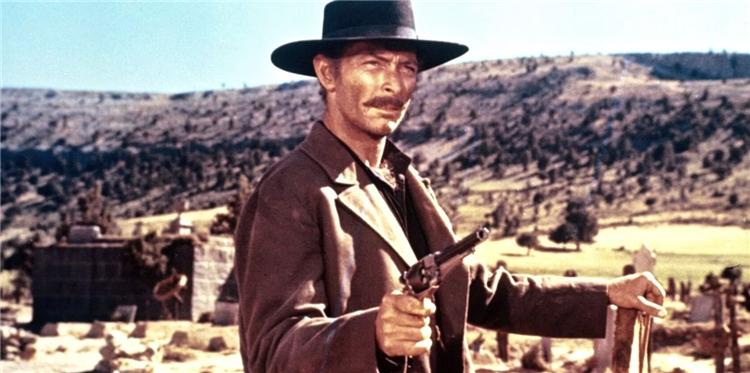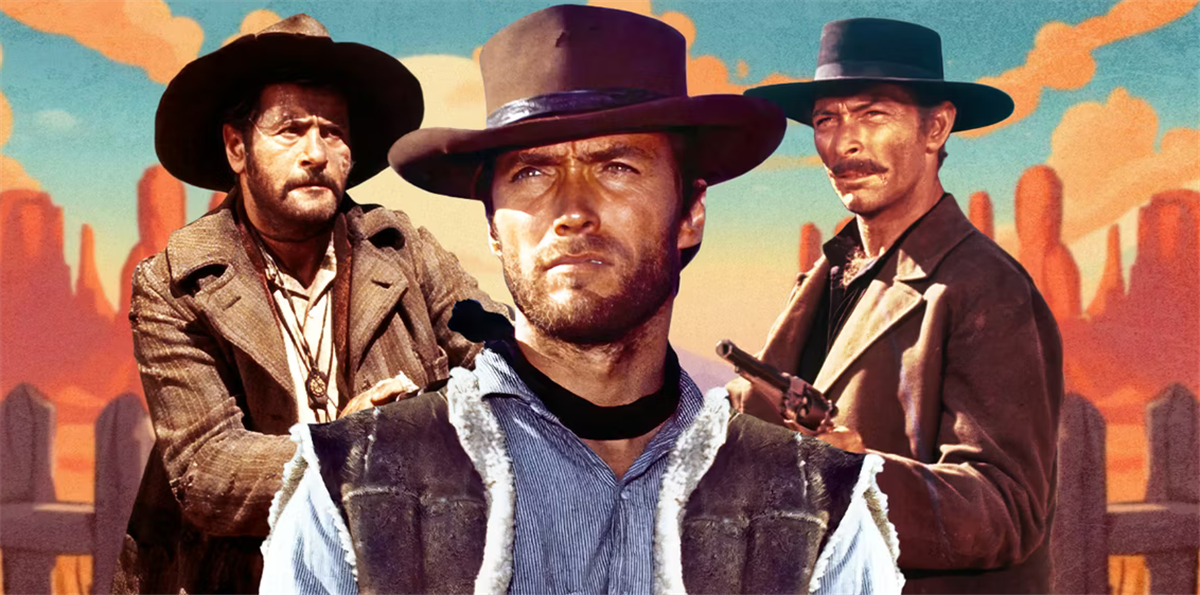- Lee Van Cleef is the most under-appreciated and overlooked regular of the Western genre, with his hawkish eyes and intimidating demeanor making him an effortless antagonist.
- Van Cleef’s talents go beyond playing villains, as he proves himself to be a skillful actor in his few starring roles where he brings complexity and depth to his characters.
- Van Cleef consistently out-acts his co-stars, stealing the scene and proving that he deserves to be mentioned among the most crucial actors in Western film history.
Move over Wayne and Eastwood — Lee Van Cleef is here to steal your scene! Sure, John Wayne and Clint Eastwood are practically synonymous with Westerns (and for good reason), but Van Cleef is the most under-appreciated and overlooked regular of the genre. His hawkish, piercing eyes and naturally intimidating demeanor make him an effortless antagonist, but his skill as an actor reaches way beyond his ability to mean mug.
He’s good. Actually good. If the rarity of him landing starring roles convinces you otherwise, think again — Lee Van Cleef, understandably but unjustly typecast as cruel, scheming villains, is one hundred percent movie star. He intimidates in High Noon with little to no lines of dialogue. Along with an untouchable Eli Wallach, he steals The Good, The Bad, and The Ugly out from under Clint Eastwood. In criminally underrated Spaghetti Westerns like Death Rides a Horse and Day of Anger, Van Cleef steps into the blinding limelight of leading man and shimmers. While it’s true that Eastwood, Wayne, and Golden Age superstars like Jimmy Stewart and Henry Fonda live more comfortably in the stratosphere of being household names, Van Cleef absolutely deserves to be mentioned among the ranks of the most crucial actors in Western film history.
Lee Van Cleef Is the Perfect Western Villain

There’s no such thing as a great hero without a great villain, right? Well, Lee Van Cleef is practically the best (and most consistent) actor playing a villain in the Western genre. Through his magnetic performances, he helps elevate every picture he’s in by serving as an intense opposing force to his “good-guy” co-stars. Perhaps most widely known for playing the titular Bad — or Angel Eyes — in The Good, The Bad, and The Ugly, Van Cleef quickly became typecast after a wordless but memorable role in the Oscar-winning Western High Noon. Lingering in the background, smoking cigarettes, playing a harmonica, and always looking on with his steely eyes, Lee Van Cleef is arguably the most memorable of the desperados that arrive unwelcome in Gary Cooper‘s town. He doesn’t need any of that pesky dialogue. He just stands in the background looking tough, and it works.
It’s more of the same in the John Wayne-starring The Man Who Shot Liberty Valance. Van Cleef sticks to the background, his lines of dialogue few and far in between, meanmugging every goddamn person in the frame. It’s a shame that his character is punched out by Wayne’s and rendered useless for the rest of the movie — he made a convincing scoundrel that should have made it to the climax. Of course, most notable are Van Cleef’s roles in Sergio Leone‘s Dollars trilogy. Showing up in the second and final films, the actor plays against a top-form Eastwood as antagonist characters.
In For A Few Dollars More, he plays a rival bounty hunter to Eastwood’s Man With No Name. Though he eventually (somewhat reluctantly) joins forces with the Man in order to achieve a mutual goal, Mortimer (Van Cleef) is a more compelling character than the main protagonist. All of Eastwood’s teeth-baring and cigar-sucking are not without their value (the man is an icon, after all), but there’s rarely a moment where we’re curious as to what he’s thinking. He’s a bounty hunter. He goes around shooting people. What more do you need to know?
Van Cleef, though, wanders across the movie dressed in an imposing all-black outfit, looking like a manifestation of Death itself. Mortimer is shrouded in mystery, with an enigmatic past that helped the character become interesting. Eastwood’s Yojimbo-turned-gunman is fun to watch, but it’s really only when playing off of Van Cleef that he truly impresses. The two behave like long-lost twins (they both shoot a helluva lot of people and are good at it) but are played entirely differently. Van Cleef breathes more personality into his role. He brings to his character complexity that makes him somebody to both fear and empathize with. He wins this round.
Again, it’s for The Good, The Bad, and The Ugly that Van Cleef will be most remembered, and for good reason. As the movie’s sadistic, cold-blooded villain, Angel Eyes mows down a man after interrupting his breakfast, slays another in his bed, and backstabs anybody that he needs to in order to get what he wants. Just look at his first appearance in the film, in which he appears on the horizon, approaches the camera, and unsaddles from his horse while Ennio Morricone’s magnificent score booms over the soundtrack. He scans the landscape with his intense gaze, and that’s all we need to see this is one nasty bugger. When he shows up during the film’s monumental climactic standoff — the best in the entire genre — he brings with him the sort of unstoppable chaotic force that makes him a perfect antagonist. In a film with three indelible performances, Van Cleef arguably walks off with the award.
When asked by Johnny Carson if he’s ever tired of playing bad guys, Van Cleef expressed satisfaction with being typecast. “They’re pretty good characters, actually. They’ve got a lot of depth — some of them,” the actor said. It helps that, at least in the Western genre, Van Cleef is the
Lee Van Cleef’s Few Starring Roles Are Equally Convincing

